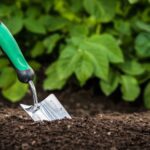Did you know that 70 percent of houses have mold? There is a general understanding of what types of mold are dangerous.
Molds that produce toxic substances are regarded as harmful, for example. The same applies to molds that produce substances that cause allergic reactions. When a person sees a colony of mold growing on their property, they often know it is dangerous.
For that reason, many people clean the mold immediately. They want to remove the mold before any dangers develop.
Read and learn more.
Mucor
Mucor is a mold commonly found indoors and thrives on moist food and high nitrogen levels. It is often found in soil, decaying organic matter, and some grains. Mucor is a common food spoilage mold and can produce mycotoxins that can be dangerous to humans.
Additionally, Mucor can cause allergic reactions and respiratory symptoms when inhaled and can colonize various surfaces within a building.
Acremonium
Acremonium is one of the many different types of mold that exist today. This mold is usually found in moist and warm areas, such as bathrooms, basements, and attics. Acremonium typically has a white, powdery appearance and can produce mycotoxins that cause health issues.
This mold grows on fabrics and can cause discoloration or staining, making removing it difficult without unique cleaning products. Acremonium can also grow on various types of insulation and indoor plants, making it challenging to eradicate.
Aspergillus
Aspergillus is one of the most common types of mold that exists today. The Aspergillus species can be found in soil, air, and decaying matter. It tends to prefer temperate climates.
It also tends to cause spoilage in stored food products or cause respiratory distress when inhaled. Aspergillus colonies can release hazardous toxins into the environment.
Aureobasidium
You can find it in showers, bathrooms, walls, attics, and other damp, poorly-ventilated environments. Despite its fuzzy appearance, Aureobasidium is a dangerous mold that can cause skin rashes, respiratory issues, allergic reactions, and other health complications.
Exposure to Aureobasidium can also lead to skin infections and a weakened immune system. For this reason, taking measures to prevent and eliminate the growth of Aureobasidium and other types of mold in our homes and workplace are essential.
Alternaria
Alternaria is a genus of mold found both outdoors and indoors. It consists of at least 23 species of fungi and has some of the highest allergenic potentials of all the molds. People come in contact with the most common type of Alternaria is Alternaria alternata, which is found chiefly outdoors in soils, plants, and decaying vegetation.
It is often identified by its yellow-green spores, which are usually distributed in air or dust. As with all types of mold, Alternaria poses the risk of adverse health effects if inhaled, and it is essential to keep the indoor environment clean and adequately ventilated.
As a smart homeowner, looking for Mold Removal Services is essential.
Understanding Types of Mold
Mold is a problem that needs to be managed. There are many different types of mold, each with its unique characteristics. To prevent and detect mold problems, it is vital to know the types of mold and the potential risks they pose.
If you found this post informative, explore the rest of our website for more helpful blog posts.




